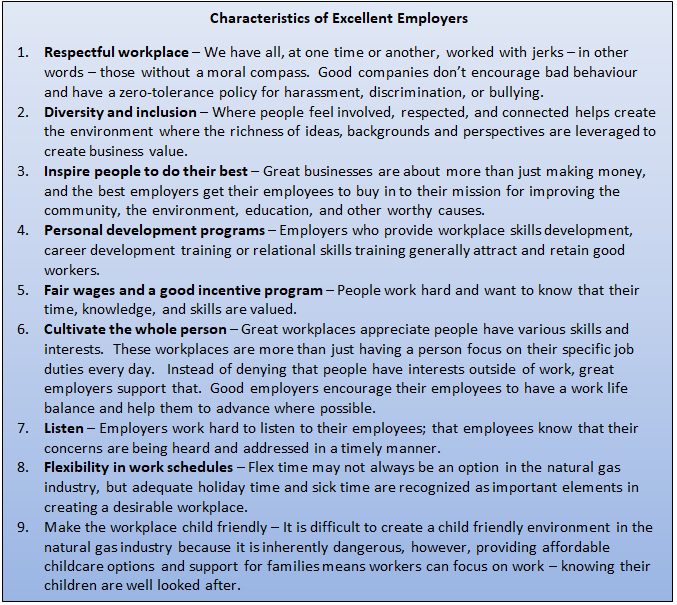-
Module 2.0 How to be Successful in this Course
-
Module 2.1 Introduction to Natural Gas
-
Module 2.2 The Natural Gas Industry in British Columbia
- Overview
- Learning Outcomes
- Natural Gas Science – The Simple Version
- Natural Gas Science – Chemistry
- Natural Gas Science – Physics
- Natural Gas Science – Units of Measurement
- Natural Gas Science – Geology
- Natural Gas Resources and Uses
- Oversight of the Natural Gas Industry
- Understanding Land Rights and Natural Gas
- Energy and the Future
-
Module 2.3 Upstream – Well Site Selection, Preparation and Drilling, Completion, Production, Water Recycling, and Reclamation
- Learning Outcomes
- The Upstream Sector – Extraction and Processing
- The Upstream Sector – Exploration and Site Selection
- The Upstream Sector – Preparation and Drilling
- The Upstream Sector – Completion
- The Upstream Sector – Production
- The Upstream Sector – Water Recycling
- The Upstream Sector – Reclamation
- Upstream Companies and Jobs in British Columbia – Companies
- Upstream Companies and Jobs in British Columbia – Industry Associations
- Upstream Companies and Jobs in British Columbia – Professional Associations
- New Vocabulary
-
Module 2.4 Midstream – Transportation, Processing, Refining
- Learning Outcomes
- The Midstream Sector
- The Midstream Sector – Processing Natural Gas
- The Midstream Sector – Liquefied Natural Gas
- The Midstream Sector – An Emerging Industry
- The Midstream Sector – Processing LNG
- The Midstream Sector – Proposed LNG Projects in British Columbia
- Transportation
- Midstream Companies and Jobs in British Columbia
-
Module 2.5 Downstream – Refining and Markets
-
Module 2.6 Health and Wellness in the Natural Gas Industry
-
Module 2.7 Safety
-
Module 2.8 Terminology and Communication
-
Module 2.9 Jobs and Careers
- Learning Outcomes
- Industry Outlook
- Technology is Changing Workforce and Skills
- Employment in the Natural Gas Industry
- Employment in the Natural Gas Industry – Types of Employment
- Employment in the Natural Gas Industry – Range of Jobs
- Employment in the Natural Gas Industry – High Demand Jobs and Occupations
- Occupational Education and Training
-
Module 3.0 How to be a Valued Employee
-
Module 3.1 Identifying Interests and Skills
-
Module 3.2 Looking for Employment in Natural Gas
-
Module 3.3 Applying for Employment in Natural Gas

Looking for work in any field can be intimidating or even scary, regardless of how qualified you are or how many times you have done it in the past. The good news is, you’re not alone! Everyone does it and most often people are happy to help others out. Lastly, there is kind of a formula or set of steps to doing it. This module will tell you what they are and help you get going.
The Formula
Target Jobs + Employers + Look for Opportunities = Employment

Today’s job market is very much an informal one, where employment frequently results from connections that you make rather than from an application made to an advertised job vacancy.
For this reason, it’s important to use more than one strategy to make connections in your job search, and to action those strategies simultaneously. Job searching is a multi-tasking activity!
Strategy 1: Target job vacancies

The traditional method of applying for an advertised job vacancy—these days mostly online—does still work, sometimes. It’s just that the chance of success is usually very low.
On the other hand, the connections that you make while searching for job postings, analyzing them, and applying for them can be helpful in improving those chances, and it’s good practice. Plus, it puts your resume in the queue, which supports your other search strategies.

Lastly, don’t rule out applying for entry-level (or lower level) and temporary positions. In this sector, it is common to start at the bottom and work up; and temporary jobs frequently lead to full-time work.
Strategy 2: Target select employers
Strategy 2 involves building a list of specific employers to target when making connections in your job search. These employers are ones that you research and select because they fit with what you are looking for in your career and work life.
In a job search, you are trying to find a couple of things: yes, you want a job that you think you’ll like, but you also want:
- An employer who is good to work for
- An employer with an excellent safety record
- A company with a culture that fits with your personality, values, and interests
- A location where you would be happy to work and/or live.

Employers who are good to work for, tend to distinguish themselves from others in a range of ways which can make them more desirable to work for, and even inspire you to work for them.
Check out Figure 2, the Characteristics of Excellent Employers, for examples of other things to look for when building your list of select employers.
Strategy 3: Look for opportunities
The third strategy to include in your job search is to look for opportunities. People are hired for all kinds of reasons and situations. Some people are fortunate enough to be in the right place at the right time e.g., they showed up at a job site ready and qualified to work at a time when more workers were needed.
In other cases, a change of circumstances in the business e.g., unanticipated growth, a new line of business, employee turnover, etc. can create job opportunities that an employer has not anticipated or has not yet acted on.
The more you know about a company—their current situation and challenges—the better positioned you are to tell or show them how you can be an asset to them. Think of yourself as a solution to someone’s problem.

Learning Activity 1: Build a Target Employer List for Your Employment Plan
In this learning activity, you will build a list of employers to target in your career or job search. As a start, you can use the list of companies you put together from previous modules, e.g., 2.3 Upstream, 2.4 Midstream, 2.5 Downstream, 2.7 Safety, and 2.9 Jobs and Careers.
Instructions
- Retrieve the list of companies that you made in previous modules as well as the list of career and job choices you put in your employment plan
- Select one of your career or job choices
- Make a list of the characteristics you want in an employer
- Identify three to five potential employers for the career/job choice you selected, by researching their websites and other websites to see if they have the characteristics you want
- Don’t forget about the websites in modules 2.3 to 2.6 for links to companies and their information
- Use Form 1 to record information about the employers you decide to select
- Look to see if any of the employers currently have job vacancies or postings on their website and note it on the form
- Place the completed forms in your employment plan
